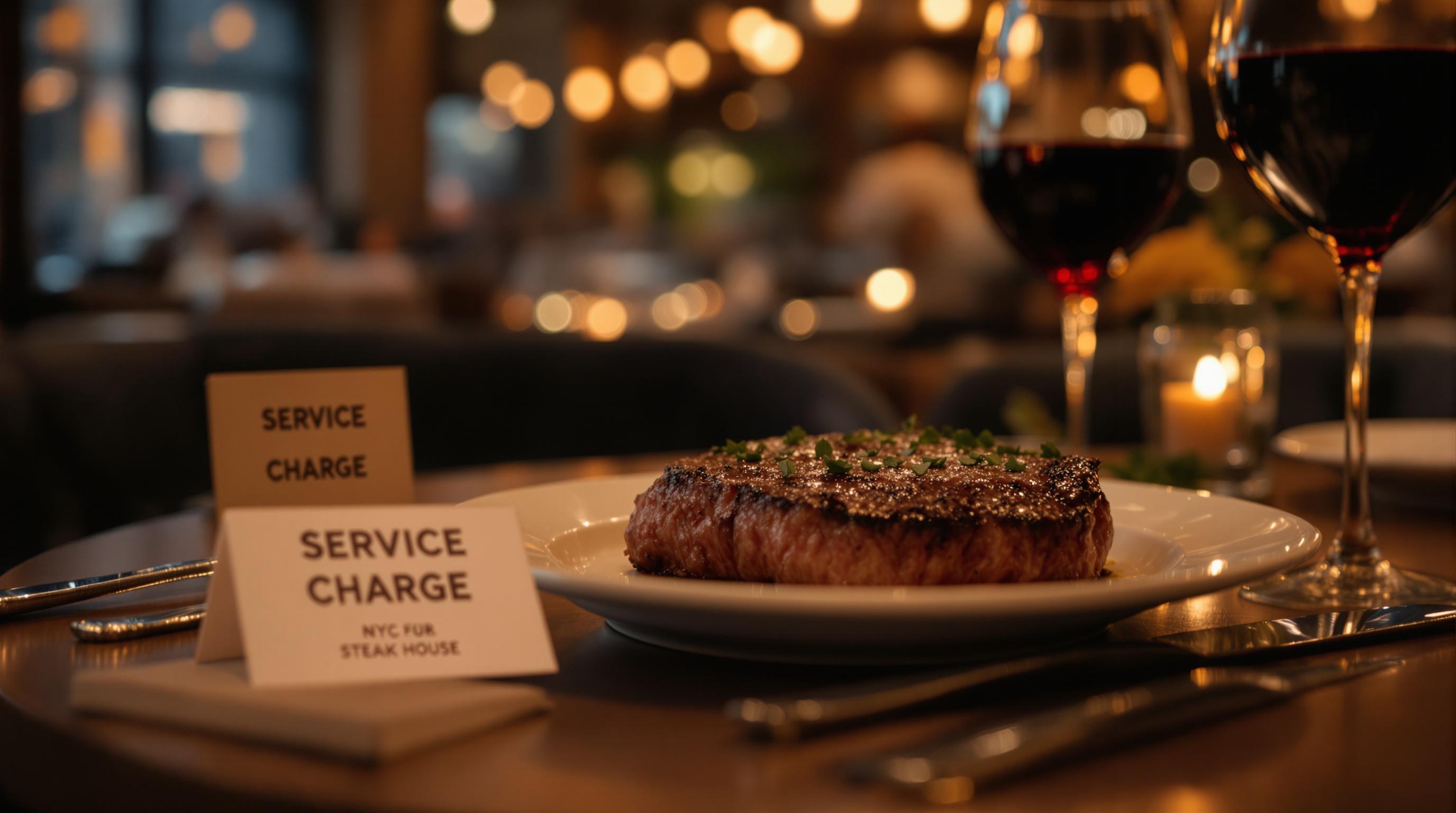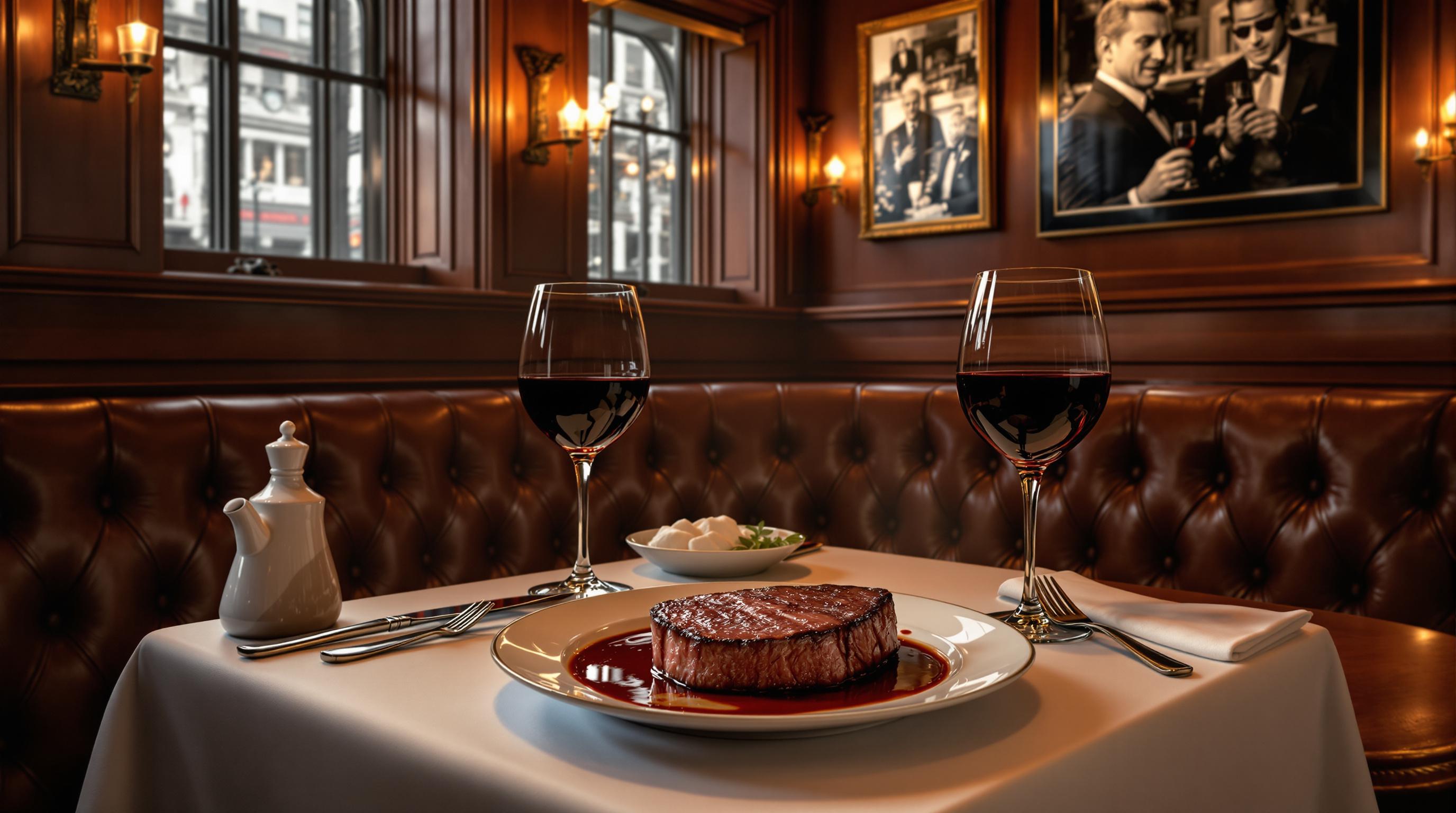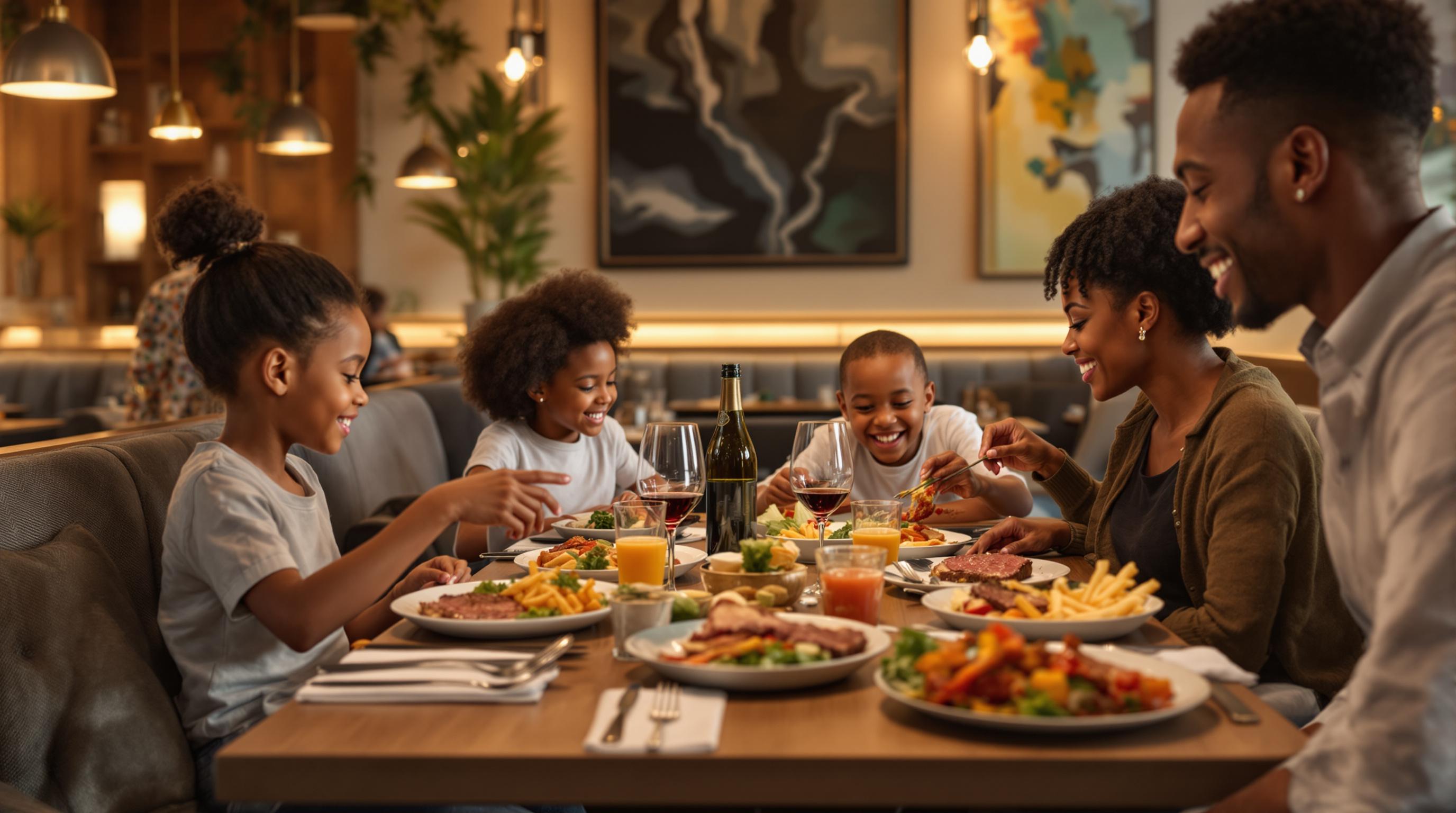When talking to a sommelier, clear communication can help you find the perfect wine for your taste, budget, and meal. Here's how to do it:
- Know Your Preferences: Identify flavors you like (e.g., sweet vs. dry, fruity vs. earthy) and wines you’ve enjoyed or disliked in the past. Be specific about characteristics like tannins, acidity, or oak influence.
- Use Simple Terms: Describe the wine’s body (light, medium, or full), taste (e.g., high acidity, low tannins), and flavors (e.g., black cherry, vanilla, earthy notes).
- Mention Regions and Grapes: Share favorite wine regions (e.g., Napa Valley, Tuscany) and grape varieties (e.g., Pinot Noir, Chardonnay).
- Set Context: State your price range and meal plans. For example, mention if you're pairing wine with steak and specify the cut.
- Engage in a Discussion: Ask questions about taste, food pairing, or value, and stay open to trying new suggestions.
How to order wine at the restaurant
Step 1: Know Your Wine Preferences
Understanding your wine preferences is key before talking to a sommelier.
Identify Your Favorite Flavors
Think about the flavors you enjoy most in wine. Do you prefer:
- Sweet or dry
- Fruity or earthy
- Bold or light
Go a step further and specify. For instance, if you enjoy fruity red wines, do you lean toward dark fruits like blackberry and plum or brighter options like cherry and raspberry?
Recall Wines You’ve Enjoyed
Make a list of wines you’ve liked in the past. Include details like the name, vintage, producer, and region. Also, note what stood out to you. For example, “2022 Rombauer Chardonnay from Carneros – I loved the rich, buttery texture.”
Highlight What You Don’t Like
Being clear about what you don’t enjoy is just as important. Here’s a quick guide to help:
| Wine Characteristic | Description | Example |
|---|---|---|
| Tannins | Drying mouthfeel | Bold Cabernet Sauvignon |
| Acidity | Tart, crisp sensation | High-acid Sauvignon Blanc |
| Oak Influence | Woody, vanilla flavors | Heavily oaked Chardonnay |
| Alcohol Level | Heat or burn | High-alcohol Zinfandel |
If a wine didn’t work for you, explain why. Instead of saying, “I don’t like red wine,” try something more specific like, “The tannins in young Cabernet Sauvignon feel too harsh for me.”
Having a clear idea of what you like and dislike makes it easier for the sommelier to recommend wines that suit your taste perfectly.
Step 2: Use Simple Wine Terms
Describe Wine Body
The "body" of a wine refers to its weight and texture in your mouth. Here’s how to describe it:
- Light-bodied: Feels as light as water on the palate (e.g., Pinot Grigio, Provence Rosé).
- Medium-bodied: Offers more substance while staying balanced (e.g., Merlot, Chardonnay).
- Full-bodied: Rich and heavier in texture (e.g., Cabernet Sauvignon, Amarone).
State Taste Preferences
When discussing your wine preferences, focus on these key characteristics:
| Characteristic | What It Means | Scale |
|---|---|---|
| Acidity | Tartness or crispness | Low - Medium - High |
| Tannins | Drying sensation in the mouth | Soft - Moderate - Firm |
| Sweetness | Level of sugar | Bone dry - Off-dry - Sweet |
| Alcohol | Warmth or heat | Light (under 12.5%) - Medium (12.5-13.5%) - High (14%+) |
For instance, saying, "I like wines that make my mouth water", points to high acidity. On the other hand, "I don’t enjoy wines that dry out my mouth", suggests a preference for low tannins.
List Specific Flavors
Be clear about the flavors you enjoy:
Fruit Flavors:
- For red wines: "I prefer black cherry and plum over strawberry."
- For white wines: "I enjoy lemon and lime more than tropical fruit notes."
Non-Fruit Flavors:
- Earthy: "I like hints of forest floor and mushrooms."
- Spicy: "I enjoy notes of black pepper and baking spices."
- Oaky: "I prefer light vanilla nuances instead of strong toasted flavors."
Once you’ve nailed down these details, share any personal background that might help refine the wine selection even further.
sbb-itb-e6be165
Step 3: Share Wine Background Knowledge
Name Preferred Regions
When discussing your wine preferences, be specific about the regions you enjoy. This helps sommeliers tailor their recommendations. Instead of using broad terms, mention exact regions and their distinctive traits:
-
Old World Regions
- Bordeaux: "I enjoy the structured Cabernet blends from the Left Bank."
- Burgundy: "I appreciate the minerality found in Chablis Chardonnays."
- Tuscany: "The Sangiovese-driven wines from Chianti Classico match my palate."
-
New World Regions
- Napa Valley: "I like bold Cabernets, especially those from Rutherford AVA."
- Sonoma: "The Pinot Noirs from the Russian River Valley are my favorite."
- Willamette Valley: "Oregon's cooler-climate wines suit my taste."
List Favorite Grape Types
Identifying specific grape varieties and wine styles can further refine recommendations. Here’s a quick guide:
| Wine Style | Preferred Varieties | Typical Characteristics |
|---|---|---|
| Red Wines | Cabernet Sauvignon, Merlot, Pinot Noir | Full to medium-bodied with a structured, elegant profile |
| White Wines | Chardonnay, Sauvignon Blanc, Riesling | Ranges from rich and oaked to crisp and mineral-driven |
| Sparkling Wines | Champagne (Chardonnay, Pinot Noir), Prosecco (Glera) | Traditional method vs. tank method for different textures |
Mention Wine Production Methods
How a wine is made can greatly influence its flavor and texture. Sharing your preferences for production methods helps narrow down choices:
-
Oak Treatment:
- "I prefer wines with subtle oak nuances rather than strong vanilla flavors."
- "I enjoy unoaked wines that highlight pure fruit characteristics."
-
Fermentation and Aging:
- If you like a creamy texture, mention a preference for malolactic fermentation.
- For deeper tannins, specify interest in wines with extended maceration.
- "I prefer wines that are ready to drink now."
- "I enjoy wines with aging potential that develop complex secondary flavors."
Step 4: Set Context and Budget
State Your Price Range
When discussing your budget, use clear price ranges to help match wines to your preferences and spending limits.
| Price Category | How to Communicate | Example Phrasing |
|---|---|---|
| Budget | Around $30–50 per bottle | "I'm looking for quality wines in the $30–50 range." |
| Mid-Range | About $50–100 per bottle | "I'm comfortable with selections between $50–100." |
| Premium | Approximately $100–200 per bottle | "For this special occasion, I can go up to $200." |
| Ultra-Premium | $200+ per bottle | "I'm open to premium options for this celebration." |
Once you've set your budget, share details about your dining plans to refine the wine recommendations.
Explain Your Meal Plans
Let the person assisting you know your dining style - whether it's formal, casual, shared dishes, or a multi-course meal. This helps them suggest wines that align with your specific plans.
If steak is part of your meal, it's helpful to provide some details about your preferences.
Pick Wines for Steak
The cut and preparation of your steak can guide the wine pairing process.
| Steak Cut | Recommended Wine Style | Pairing Rationale |
|---|---|---|
| Ribeye | Full-bodied Cabernet Sauvignon | Rich tannins balance the steak's marbled fat. |
| Filet Mignon | Medium-bodied Pinot Noir | A lighter, elegant wine complements the lean cut. |
| NY Strip | Bordeaux Blend | Complex flavors enhance the steak's bold character. |
For example, you might say, "I prefer bold reds that can stand up to a well-marbled ribeye", or "We're looking for something that pairs well with both steak and shared appetizers." If you're planning a steakhouse visit in New York City or nearby, the NY Steakhouse Guide (https://steakhousesny.com) offers detailed reviews and dining suggestions.
Step 5: Have a Two-Way Discussion
Ask Follow-up Questions
Engage in a deeper conversation by asking specific questions to narrow down your wine choice:
- Taste Profile: "How does this wine compare to my favorite?"
- Food Pairing: "Would this wine's acidity work well with my appetizer?"
- Wine Style: "Is this wine more focused on fruit flavors or earthy tones?"
- Value: "What sets this wine apart at this price?"
Once your main questions are answered, invite your sommelier to share additional insights or recommendations.
Consider New Suggestions
Be open to exploring new options your sommelier suggests. Their expertise might lead you to wines with bold flavors or unique regional characteristics. For example, if you enjoy rich California Cabernets, you could ask about similar options from other regions that deliver the same intensity.
Conclusion
Choosing the right wine starts with open and honest communication. Talking clearly with your sommelier can turn uncertainty into confidence. Using straightforward language helps close any knowledge gaps and leads to better suggestions.
Mentioning your favorite wine regions and budget preferences helps ensure the recommendations fit both your taste and price range. By combining this with an active conversation, your sommelier can tailor suggestions to perfectly match your preferences and the meal you're enjoying.
Don't hesitate to ask follow-up questions and stay open to trying something new. Whether you're at a high-end steakhouse or exploring unfamiliar wines, these tips can guide you toward selections that truly enhance your experience. Remember, your sommelier is there to help you find wines that complement your meal perfectly.


